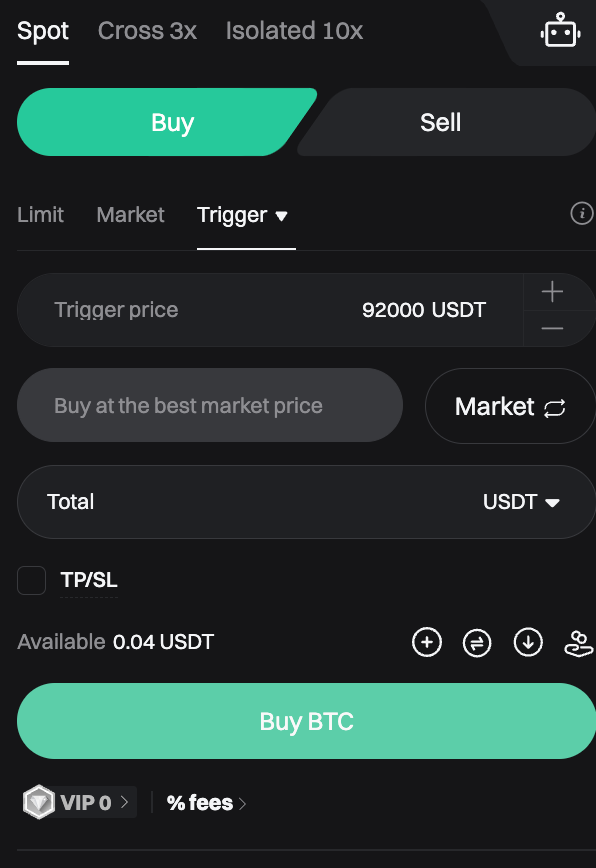Understanding One-Cancels-the-Other (OCO) Order, Trigger Order, and Trailing Stop Order
One-Cancels-the-Other (OCO) Order, Trigger Order, and Trailing Stop Order are advanced trading tools that enhance position management and automate trading strategies. Below is an explanation of each order type, its purpose, and how it functions.
Quick Summary
| Purpose | Combines profit-taking and stop-loss | Activates a market or limit order | Locks in profits while limiting risk |
| Trigger Condition | Executes one of two linked orders | Based on a specific trigger price | Adjusts stop price dynamically |
| Automation | Cancels one order when the other executes | Places an order upon trigger activation | Adjusts stop-loss as price moves favorably |
| Use Case | Balances risk and reward | Enters trades at specific levels | Maximizes profits in trending markets |
What is a One-Cancels-the-Other (OCO) Order?
A One-Cancels-the-Other (OCO) Order pairs two conditional orders: a Limit Order and a Stop-Limit Order. When one order is fully executed, the other is automatically canceled. OCO Orders are ideal for managing trades where you aim to secure profits while protecting against losses.
Key Features:
- Dual Functionality: Combines a limit order for profit-taking and a stop-limit order for loss prevention.
- Automation: Cancels the remaining order once one is executed.
- Risk Management: Helps balance potential rewards with risk exposure.
How to Place an OCO Order?
OCO Parameters:
- Limit Price: The price for your Limit Order, executed if the market moves in your favor.
- Trigger Price (Stop Price): The market price that activates the Stop-Limit Order.
- Order Price: The execution price for the Stop-Limit Order.
- Quantity: The amount of cryptocurrency to buy or sell.
Example: You buy BTC at $90,000. You want to sell at $95,000 for profit but also limit losses if the price drops to $85,000. Using an OCO Order:
- Set a Limit Order to sell at $95,000.
- Set a Trigger Price at $85,000 to activate the Stop-Limit Order.
- Set an Order Price at $84,500 for the Stop-Limit Order execution.
- If BTC hits $95,000, the Limit Order sells, and the Stop-Limit is canceled.
- If BTC drops to $85,000, the Stop-Limit Order activates and sells at $84,500.

What is a Trigger Order?
A Trigger Order is a conditional order that activates a market or limit order when the market price reaches a predefined Trigger Price. It’s useful for automating trades based on specific price thresholds.
Key Features:
- Condition-Based Activation: The order is placed only when the trigger price is hit.
- Versatile Usage: Can be configured to buy or sell based on your strategy.
- Execution Options: Choose between market or limit order execution upon activation.
Example: You predict BTC will break above $92,000 and want to buy when it does.
- Set a Trigger Order with a Trigger Price at $92,000.
- Select Market Order for execution.
- When BTC reaches $92,000, a market order buys BTC at the current price.

What is a Trailing Stop Order?
A Trailing Stop Order dynamically adjusts the stop price as the market moves in your favor. It’s designed to lock in profits while capping potential losses.
Key Features:
- Dynamic Adjustment: The stop price trails the market price by a set percentage or amount.
- Profit Protection: Secures gains as the market trends upward.
- Risk Management: Triggers a sell order if the price reverses by the trailing amount.
How to Place a Trailing Stop Order?
Trailing Stop Parameters:
- Trigger Price: The price at which the trailing stop activates.
- Callback Rate: The percentage the stop price trails behind the market price.
- Limit Option: Allows setting a specific execution price (optional).
- Quantity: The amount of cryptocurrency to buy or sell.
Example: You buy BTC at $90,000 and want to lock in profits if the price rises while limiting losses if it falls.
- Set a Trigger Price at $92,000 to activate the trailing stop.
- Set a Callback Rate of 5%.
- If BTC rises to $100,000, the stop price adjusts to $95,000 (5% below).
- If BTC then drops to $95,000, a sell order is triggered, securing your profit.

FAQs
- Can I set a Trigger Order to buy at a lower price?
- Yes, Trigger Orders can be used to buy when the market hits a specific lower price level.
- What happens if both conditions of an OCO Order are met simultaneously?
- The system executes the first condition met and cancels the other.
- Can I use a Trigger Stop Order for take-profit?
- No, Trigger Stop Orders are designed for stop-loss scenarios. Use a Limit or OCO Order for take-profit.
- Is there a fee for setting these advanced orders?
- No additional fees apply, though standard trading fees are charged upon execution.
- Can I use Trailing Stop Orders in both rising and falling markets?
- Yes, they work for selling in rising markets (locking profits) and buying in falling markets (capturing lower prices).
Disclaimer and Risk Warning
All trading tutorials provided by BITGP are for educational purposes only and do not constitute financial advice. The strategies and examples shared are illustrative and may not reflect real-time market conditions. Cryptocurrency trading carries significant risks, including the potential loss of your funds. Past performance is not indicative of future results. Always conduct thorough research and understand the risks involved. BITGP is not responsible for any trading decisions made by users.

